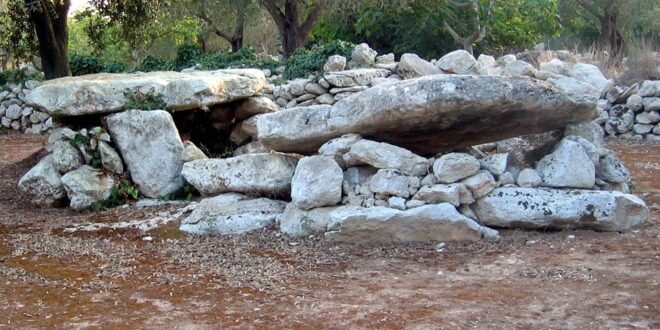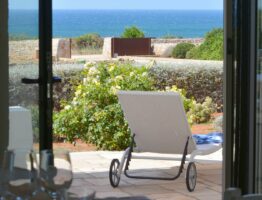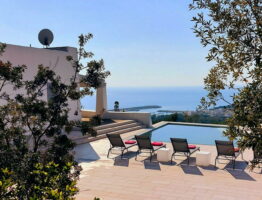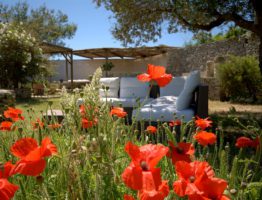What to see in Giurdignano, a strategic municipality not far from wonderful and diversified coasts, a place for history and nature walks and fabulous stays.
Defined as the megalithic garden of Italy due to its incredible concentration of dolmens and menhirs from the Neolithic era, Giurdignano, in the province of Lecce, is a place of great attraction for slow and aware travellers, who love to discover areas of high cultural value in slow way.
Above all, Giurdignano is a strategic place for those who want to stay in Salento near the sea but away from the chaos that the marinas can sometimes attract.
Giurdignano is a town of just two thousand inhabitants in the province of Lecce, whose position is the tip of a triangle that unites Otranto and Porto Badisco.
Therefore it is in a truly strategic position for those who want to know and visit
-
Otranto
-
The intense blue sea and the naturalistic area of Porto Badisco
-
the millenary culture and the sacredness of dolmens and menhirs
-
other beautiful villages in the Salento hinterland.
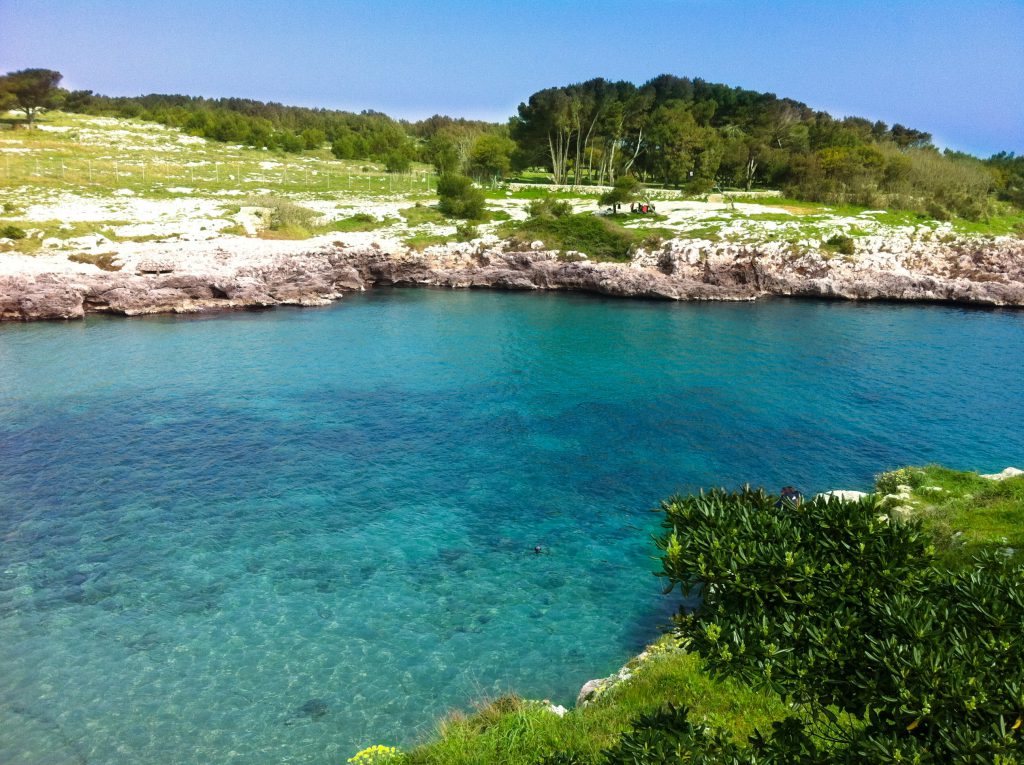
Before delving into a list of things not to be missed in Giurdingnano, we advise you to choose Casa Riad Impluvium as the basis of your stay in Salento
Very peculiar holiday home, it stands out for its riad-like style, surrounded by high walls, but still reminding a local masseria, with beautiful arabesque internal courtyards, in the heart of Giurdignano.
Here time passes to the tolling of the bells of the nearby Church, and the beautiful internal courtyard is the perfect place to enjoy the scent of summer evenings.
See more about Casa Riad Impluvium in Giurdignano
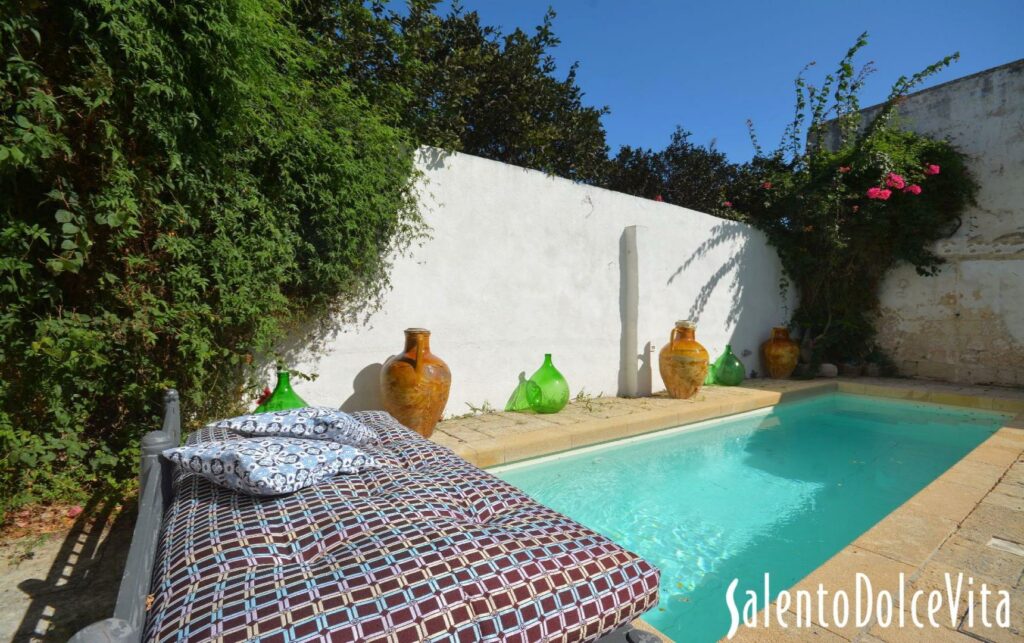
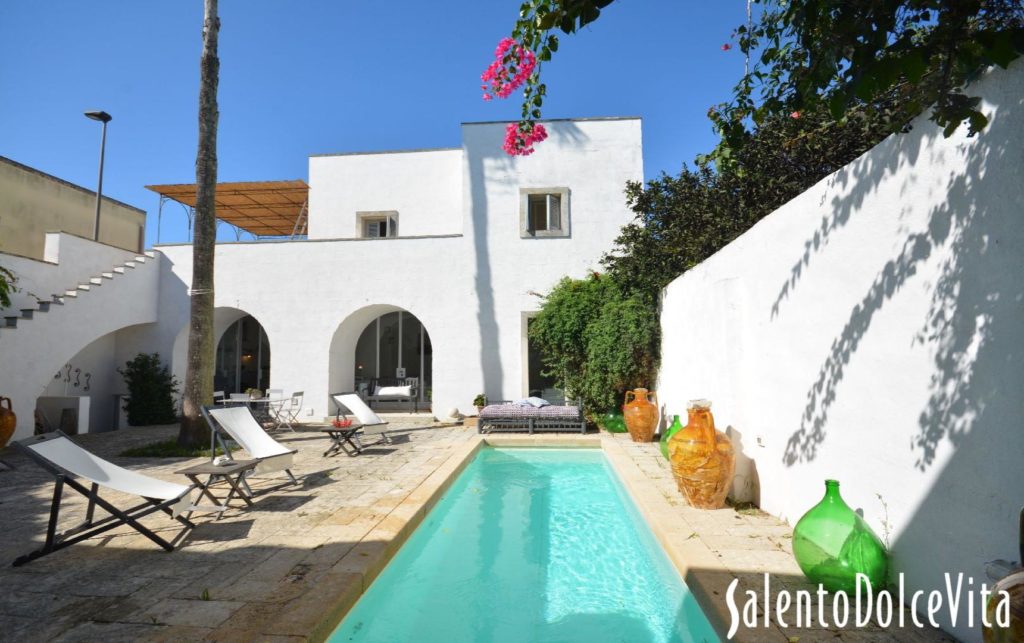
CIS: LE07503391000007357
booking@salentodolcevita.com
What to see in Giurdignano and what to do around the Megalithic Garden of Italy
Dolmens and Menhirs, unique heritage in Italy
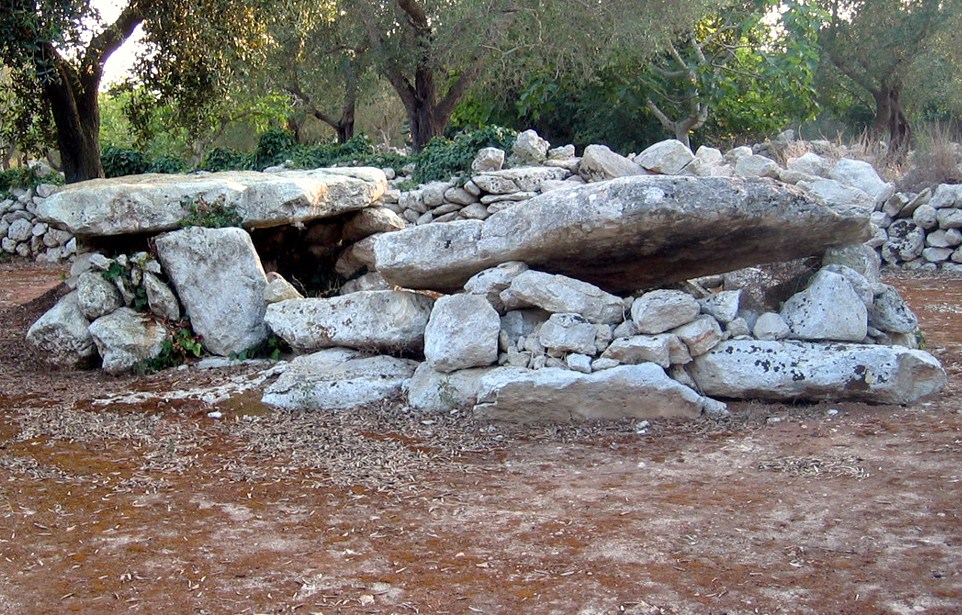
Dolmens and Menhirs are very ancient funeral and/or celebratory constructions from prehistoric times (mostly Neolithic for Menhirs and between the 5th and 3rd centuries BC in the case of Dolmens).
Their archaic roots have always made their exact historical tracing and exact function complex to define, thus also making them very mystical and magical; the places where dolmens and menhirs are found in Giurdignano are both inhabited areas and areas in the countryside but in all of them the historical and sacred energy is strong, so much so that even the Church, over the centuries and in local history, has named them with names of Christian saints.
Itinerary on foot to see the Dolmen and Menhir in Giurdignano
- from Piazza Municipio, continue towards Via Borgo: you will come across the twin menhirs.
- Continuing on Via Borgo, leave the inhabited area behind you, crossing the countryside; You will find the San Paolo menhir, also called Menhir Vicinanze 1, about 3 meters high and with two crosses engraved on the face facing south, which takes its name from an ancient farmhouse.
- Following the indications for the megalithic path, you will find the menhir Vicinanze 2, surrounded by olive trees and dry-stone walls.
- Going ahead for about 2 km you reach the dolmen Stabile
- You will see the town again; take Via Piave to get to the San Vincenzo menhir.
- Dolmen Grassi, you will find it along the road that connects Giurdignano with Minervino di Lecce.
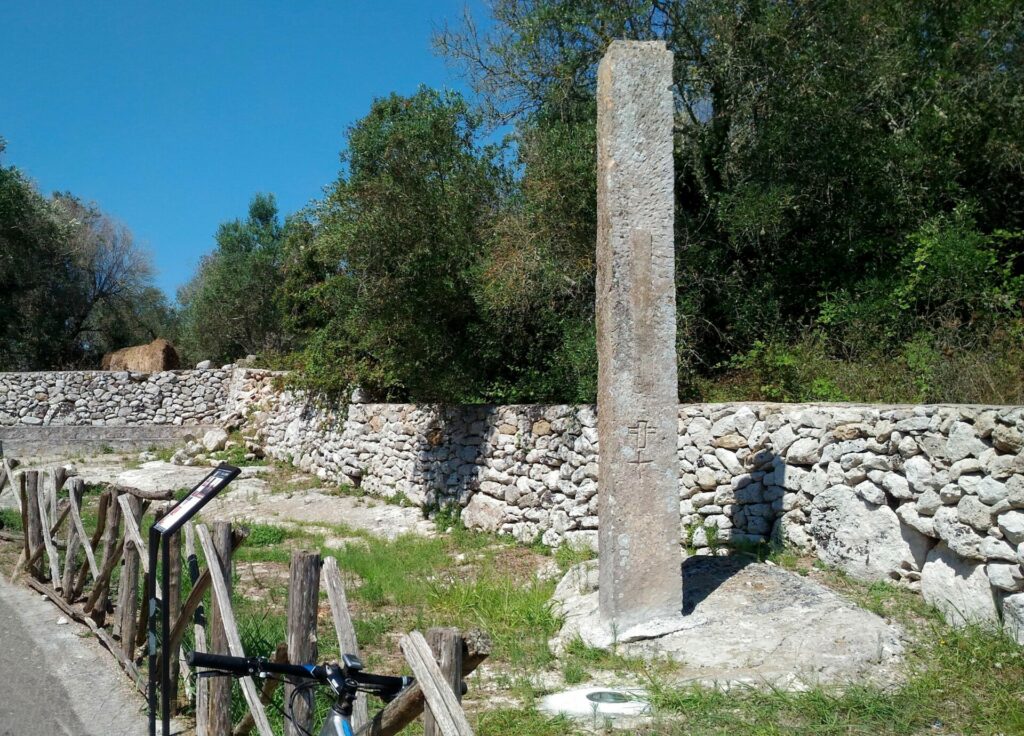
Crypt of San Salvatore
Among the things to see in Giurdignano there are other very ancient structures with a mysterious charm, such as the crypt of San Salvatore, practically continuing the path just interrupted for a visit to the megaliths;
Excavated entirely in the rock, a crypt with three naves.
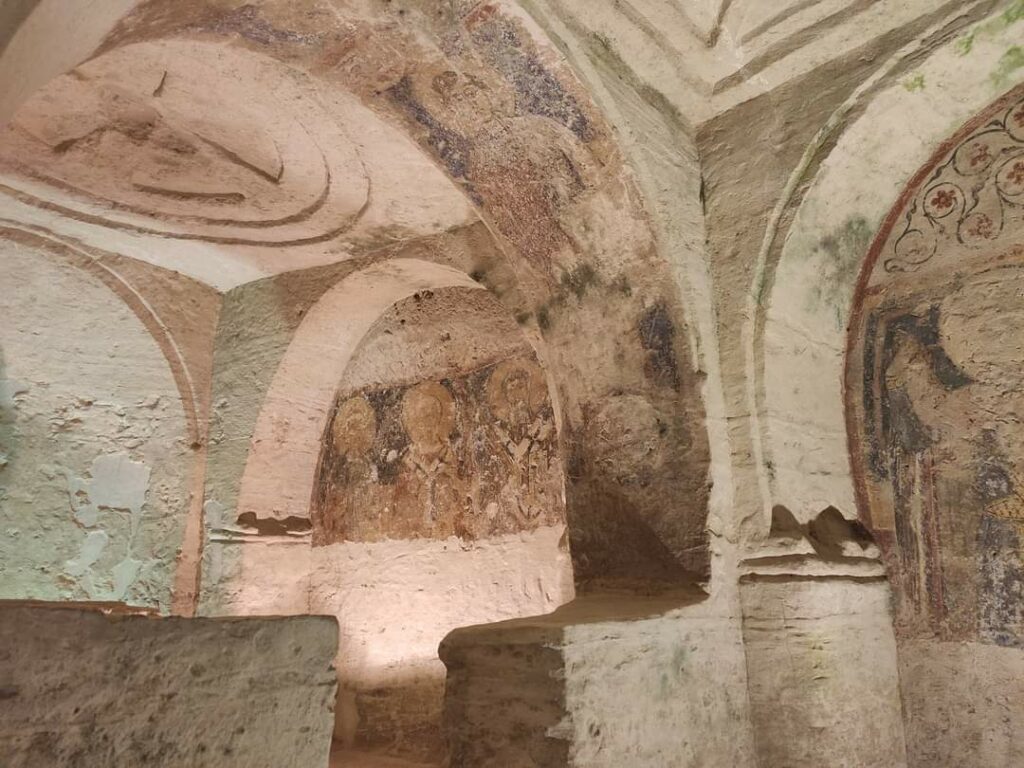
Trappitello del Duca underground oil mill
Salento has, among its infinite elements of artistic, historical and architectural interest, also the underground oil mills, also called hypogea.
Among these, the Trappitello del Duca, 16th century, here in Giurdignano, which you will find continuing on Via Borgo, between the inhabited area and the megaliths of the countryside. A stone ladder will take you to a large room where the ancient tools for oil production, a treasure from Salento, are displayed.
The Centoporte abbey of Giudignano
Two km from the town, we find a place of great charm due to the mystery inherent in its state of abandonment; Beautiful to photograph and to observe in silence, feeling the energy of the place, which takes its name from the remarkable presence of doors and windows, which contribute to the play of light and blue with the Salento sky.
Palazzo Baronale
In the heart of the town, in Piazza Municipio, you will find the Palazzo Baronale, an imposing example of anti-Saracen fortification which gives an example of how, in the 16th century, the fear of invasions from the sea was at the center of urban and rural planning.
In 1600 it was equipped with a moat. For about two centuries it was the home of the families of feudal lords who took turns here.
Church of the Transfiguration of the Lord
Also in the town hall square, the church of the Transfiguration of the Lord (mid-1770) appears as a compact and linear nucleus in Lecce stone on the outside, with an interior of marble altars on a structure with a single nave and a Latin cross.
What to do and see around Giurdignano
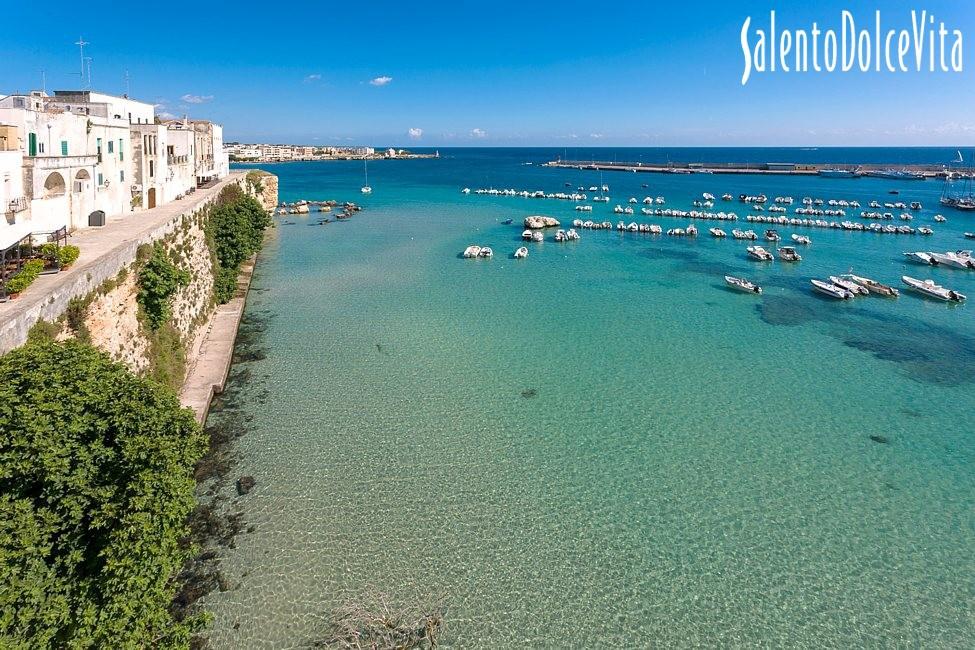
As mentioned, Giurdignano is a strategic town, because it is close to many areas of interest in Salento.
In the surroundings of Giurdignano you can
-
Visit Otranto, from the wonderful village to its Bauxite Quarries
-
Visit and go to the sea in Porto Badisco, a heavenly place where legend says Aeneas landed, fleeing from Troy in flames
-
visit the villages of Uggiano la Chiesa
-
and Minervino di Lecce
